They are known as “superfoods” for a reason: The more greens you eat, the less likely you are to develop chronic diseases such as cancer, type 2 diabetes, and heart disease. The problem? Most Americans don’t eat nearly enough dark-green vegetables.
On average, according to the Harvard School of Public Health, we get just three daily servings of any kind of produce. And USDA reports suggest that dark, leafy greens don’t come close to ranking among the most commonly eaten veggies.
That means a lot of us are missing out on greens’ nutritional benefits, which include boosting immunity, enhancing detoxification, reducing inflammation, improving digestion, and helping maintain a proper acid-base balance in the body.
One solution? Taking them in supplement form. “Consuming greens supplements, such as powders and juices, can be a convenient and reliable way to get your necessary daily intake of green vegetables — and then some,” says Michael B. Wald, MD, PhD, ND, director of nutritional services at Integrated Medicine of Mount Kisco in New York.
Power Packed
So what qualifies a given edible as a “supergreen”? Exceptional nutritional density. Supergreens are jampacked with nutrients — especially phytonutrients, but also including chlorophyll, digestive enzymes, and fiber — that keep your body healthy and ward off disease.
The most common and potent types include young cereal grasses, such as wheat, barley, and alfalfa, along with algae, like spirulina and chlorella.
Most are edible in their natural, unprocessed form, but since most American eaters are not inclined to chew on barley grass or add sea greens to their salads, supergreens are offered in powder, capsule, and juice form.
Such greens products are typically made from grasses and algae harvested at their peak nutritional state. They are then dried at low temperatures and powdered. Some grasses are picked fresh for processing in juicing machines.
“At the early grass stage of their growth, grasses are actually closer to vegetables than grains in nutrient composition,” says Kelly Morrow, MS, RD, from the Department of Nutrition and Exercise Science at Bastyr University in Kenmore, Wash.
As the cereal grasses mature into the grains used to make bread, Morrow explains, the nutrient makeup of the plant is altered: “There is a loss of some vitamins, such as A and C, and a rise in starch levels.”
Highly Concentrated
More than a pound of greens might be used to make a mere ounce of powder. So, cereal grasses and algae can offer far greater nutrient density by volume than most fresh green vegetables you’ll find in the supermarket produce department, says Carolyn Dean, MD, ND, medical advisory board member of the Nutritional Magnesium Association.
Here’s what that concentration of nutrients will get you:
Detoxification: Cereal grasses and algae are rich in chlorophyll — the chemical that lends plants their emerald hue — and a wide array of toxin-elimination benefits.
“Chlorophyll can help escort cell-damaging toxins like dioxin from the body via the liver,” says Victor S. Sierpina, MD, Laura Nell Nicholson Family Professor of Integrative Medicine at the University of Texas Medical Branch.
Chlorophyll can help escort cell-damaging toxins like dioxin from the body via the liver.
“Additionally, it’s a key compound for improving the function of essential detoxification pathways.”
Experts such as Dean and others believe that chlorophyll can assist healthy blood flow because the chlorophyll molecule is similar in structure to hemoglobin, but with magnesium in place of iron. And the cellulose cell walls in chlorella, an alga high in chlorophyll, have been found to bind strongly to mercury, arsenic, PCB, and other toxic metals, and can eliminate them from the body.
Immune Boost: Similar to their leafy green and cruciferous counterparts, cereal grasses and algae are notable for their stellar oxygen radical absorbance capacity (ORAC) score — a test-tube analysis that measures a food’s or chemical’s ability to squelch nefarious free radicals.
As free radicals or oxidants bounce around your body, they damage cells, raising the risk for a number of chronic maladies, including cancer, heart disease, and Alzheimer’s.
“A daily shot of greens can provide an arsenal of phytonutrient antioxidants, including gamma linolenic acid and polysaccharides, to help neutralize these free radicals, thus preventing cell disruption and strengthening your immune system,” says Dean.
Tissue Repair: That healthy dose of antioxidants in supergreens may help reduce or repair the oxidative muscle damage associated with exercise, making supergreens helpful for improving recovery from high-intensity workouts.
Additionally, certain compounds in supergreens appear to assist with wound healing. A semi-synthetic derivative of chlorophyll (chlorophyllin) has long been used in hospitals to stimulate the growth of new tissue in slow-healing wounds.
Inflammation Reduction: “It’s now recognized both clinically and scientifically that chronic inflammation in the body leads to cell, tissue, and organ degeneration, and is thus implemented in all diseases,” says Wald.
“Green powders contain literally hundreds to tens of thousands of plant compounds suspected or well-established to reduce inflammation.”
pH Balance: Greens are alkalizing, meaning they help restore a healthy acid-alkaline balance in the body. Wald says that the standard American diet, containing acidifying foods such as coffee, soft drinks, and fast-food burgers, disrupts the body’s preferred alkaline state. “An acidic environment within the body can play a role in a number of diseases and could lead to the leaching of calcium from bones, promoting kidney stones and osteoporosis,” he says.
Digestive Aid: Supergreens provide digestive enzymes that help us digest food — especially proteins. As we age, we naturally produce fewer digestive enzymes, and supergreens can help make up the difference.
“Many people say, ‘You are what you eat,’” explains dietitian Ashley Koff, RD. “But it’s actually more accurate to say, ‘You are what you digest and absorb’ — and that’s what makes these supergreens so super for us.”
Which Supergreens Are Right for You?
These grasses and algae are the most valuable players among supergreens. They are available in powders and capsules; some can be found raw and in juice form. (Because cereal grasses are rich in vitamin K, people taking anticoagulant medications should consult with their healthcare provider before ingesting.)
Grasses
Wheat Grass
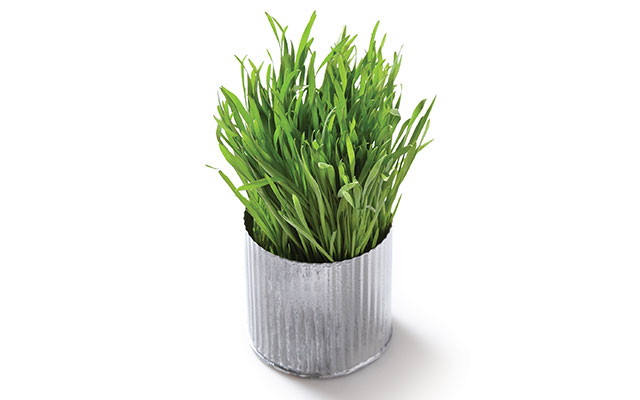
The poster child of the supergreens movement, wheat grass is the form that young wheat plants take before maturing to produce seed heads and wheat-grain kernels. This potent young plant is about 70 percent chlorophyll and boasts impressive amounts of amino acids, beta-carotene, fiber, vitamins C and B, and antibacterial properties. It has been shown to help destroy cancerous cells and is a source of vitamin K, which helps blood clot and may be associated with reduced risk of developing type 2 diabetes. Wheat grass can be grown at home and juiced with a specialized juicer.
Barley Grass
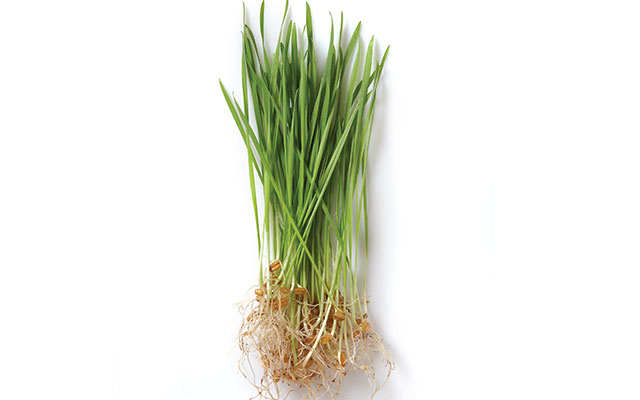
The shoots of the barley plant, barley grass is high in essential amino acids, enzymes, and vitamins, particularly C, E, and K. It’s also packed with minerals, including iron, calcium, and magnesium. Available in juice, powder, and capsule form; the juice is not as widely available as wheat-grass juice is. “The main reason I use barley grass in powder form is the high level of superoxide dismutase, which is a powerful antioxidant that scavenges cell-disrupting free radicals in the body,” says naturopath Carolyn Dean, MD, ND. Although barley and wheat grasses are often considered safe for those with gluten intolerance, many experts advise those who are highly gluten sensitive to consume them with caution.
Alfalfa Grass
Widely cultivated as a pasture and hay crop, alfalfa resembles clover, with clusters of small purple flowers. It’s rich in calcium, magnesium, potassium, zinc, and iron, plus other healthy minerals and essential amino acids. Alfalfa is also an excellent source of beta-carotene. “The calcium in alfalfa is particularly well absorbed by the body, and since alfalfa is in the legume family, it’s a source of protein,” says Dean. Grasses such as alfalfa also provide lutein, a potent carotenoid phytonutrient that helps protect eyesight by offsetting some of the harmful effects of the sun’s UV rays.
Algae
Chlorella
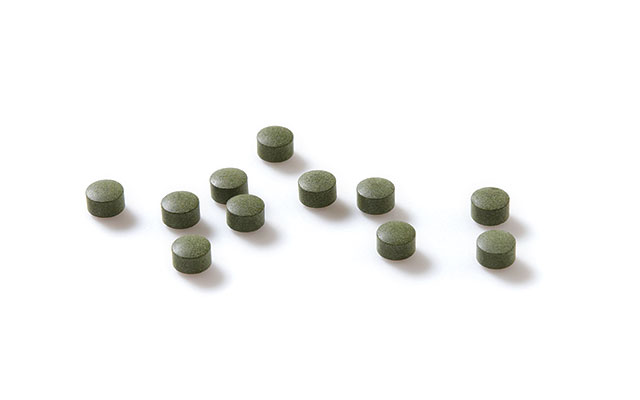
Humans can’t naturally absorb nutrients from chlorella because of its thick cell walls, but modern processing used in making powders and capsules cracks those walls, releasing “chlorella’s essential fats, vitamins, minerals, and phytonutrients that otherwise would resist digestive enzymes,” says Michael B. Wald, MD, PhD, ND. Initial research has shown that chlorella may have positive effects in fibromyalgia patients. There is debate about the merits of algae as a vegan source of vitamin B12; experts like Wald assert that the type of vitamin B12 in algae is not bioavailable to the human body.
Spirulina
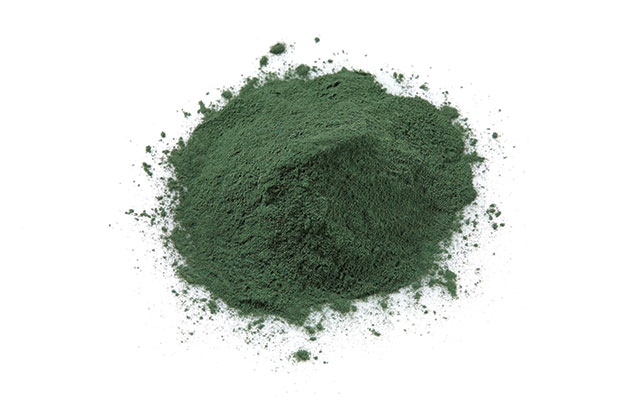
Spirulina is a freshwater blue-green alga that has been harvested from lakes for thousands of years. It’s about 60 percent protein by weight and has an abundance of nutrients, including vitamin K and iron. It is richer in beta-carotene than carrots (it’s not orange because of its profusion of green chlorophyll). Research suggests that a daily spirulina fix can help improve brain function, reduce inflammation, and lower serum cholesterol. Phycocyanin, the antioxidant-rich blue pigment in spirulina, has been shown to halt the spread of cancerous cells. “Spirulina may also act as a prebiotic to help probiotics grow in the gut, improving digestive health,” says Victor S. Sierpina, MD.
How to Get Your Greens On
So, what’s the best way to get your supergreens — powder, capsule, or fresh juice?
Michael B. Wald, MD, PhD, ND, recommends choosing a powdered product. The advantage, he says, is that you’ll get a larger dose of the good stuff: “Taking a scoop of a green powder might be the equivalent to what is found in 30 to 50 capsules.”
For those who don’t love the taste or consistency of powdered greens products, Wald says that capsules are a good option: “Taking capsules is way better than taking no greens at all.”
Most people find dried cereal grasses far easier to deal with than fresh cereal grasses, which must be juiced and consumed right away to obtain all their healthful compounds. “The dehydration process used for powders actually maintains much of the original nutritional and enzyme content,” Wald says.
Premixed greens juices and smoothies are convenient, but will generally contain less variety and total quantity of greens than what you could make yourself at home. “A store-bought greens juice could be mostly apple or some other basic fruit juice with just a speck of greens,” says Kelly Morrow, MS, RD. “Many of the greens juices actually have as much sugar as do sodas.”
Morrow recommends reading the ingredients lists (or inquiring about the contents) of any prepared juices or smoothies to make sure greens are among the first items listed.
“To get the maximum benefit, it’s best to make your own greens drinks using fresh greens or a reputable powder brand mixed with water,” she says. If you’re looking for a flavor boost, Morrow suggests including a splash of lemon or other juice. (For more ideas, see “Tasty Supergreens” a bit further down.)
What is the recommended daily dose of supergreens? Wald suggests consuming anywhere from 1 to 6 grams per day of a dried supergreens product. That amount, he says, “provides a really solid level of plant-based nutrition, one that can cover many healing bases.”
Keep this in mind, though: While supergreens can provide powerful nutritional benefits, they aren’t a replacement for other vegetables in your diet. Nor are powders, capsules, or juices meant to replace whole foods.
“No single group of greens can provide the full breadth of necessary nutrients and antioxidants,” says Morrow. So it’s still vital to eat a wide variety of fresh veggies, fruits, nuts, and seeds.
Tasty Supergreens
Here are some smart ways to get more supergreens into your body:
- Mix greens powder with coconut water for a simple drink.
- Whisk into dressings for a supercharged salad.
- Stir into plain yogurt along with chopped nuts for a healthy snack.
- Make your own energy bars with a base of dried fruit and supergreens powder.
- Blend into a daily smoothie. See below for an easy recipe from Kris Carr, author of Crazy Sexy Kitchen.
DIY Supergreens Powder
You can easily create your own custom greens mix. Carolyn Dean, MD, ND, medical advisory board member of the Nutritional Magnesium Association, recommends this recipe as a base:
Step one: Mix equal parts powdered wheat grass, barley grass, and alfalfa grass with half-part spirulina or chlorella.
Step two: Store in freezer to preserve freshness and nutritional might.
Step three: Place 1 to 2 tablespoons in 8 ounces of water and shake. Or blend with protein powder, fruit, chia seeds and/or spices such as cinnamon and ginger for added flavor.
Detoxifying Supergreens Smoothie
Makes two servings
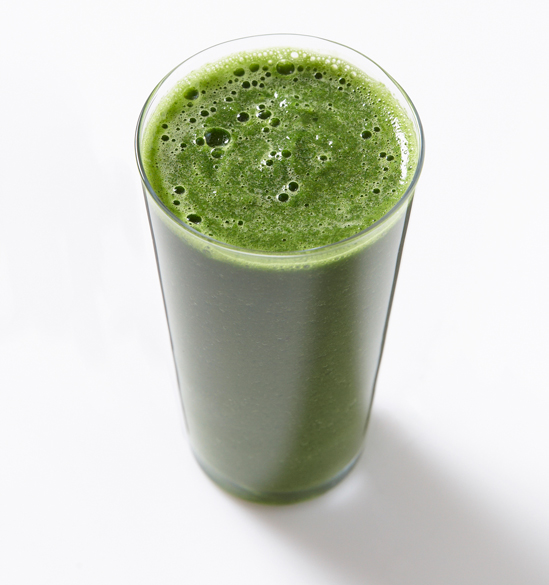
Ingredients
- 1 avocado
- 1 banana
- 1 cup blueberries
- 1 cucumber
- A handful of kale, romaine lettuce, or spinach
- 1 to 2 tsp. spirulina or chlorella
- Coconut water (or purified water)
- Stevia, to taste (optional)
- A sprinkle of cinnamon or cacao (optional)
Directions
Blend together and enjoy. You can experiment with adding hemp seeds for protein and maca powder for energy.
Buyer’s Guide: Six Supergreens to Try
Getting your daily supergreens doesn’t mean you have to choke down a powdered mix that tastes like chalky compost. Manufacturers have worked over the years to greatly improve mixability and flavor. Many now include other healthy perks such as antioxidant-rich berry mixes, protein powder, probiotics, digestive enzymes and fiber blends, and usually powders that cost more contain more of these substances. Check labels to see what you’re getting; many of these are sweetened with stevia. Here are six powders worth trying.
Note: Each of these powders was tested by whisking the suggested serving size with 6 ounces of filtered, cold water.
- Dynamic Greens ($42/10.5 oz./27 servings) Containing organic spirulina and alfalfa as well as chlorella and other veggies and fruits, this powder is great tasting, easy to mix, and designed to support detoxification. Vegetarian, gluten-free, and free of common food allergens, it can be added to water or a protein drink to boost fruit and vegetable intake. Note that this product contains stevia.
- Amazing Grass ORAC Green SuperFood ($30/7.4 oz./30 servings; amazinggrass.com) Consider this the Arnold Schwarzenegger of supergreens powders; packed with spinach, wheat grass, and spirulina, and a powerful antioxidant blend, it delivers a whopping ORAC value of 40,000 per serving. It has a subtle but not overpowering berry flavor, but the powder produces a slightly grainy drink so consider using a blender.
- Vibrant Health Green Vibrance ($50/12.8 oz./30 servings; vibranthealth.us) This mix is chock-full of organic cereal grasses, along with probiotics, organic vegetables, flaxseed, adaptogens, and enzymes. The drink is unsweetened, but try it first just using water, then if you don’t like the flavor, mix it with juice.
- MacroLife Naturals Macro Greens ($43/10 oz./30 servings; macrolifenaturals.com) Although it mixes easily with water, this powder does have a definite green, earthy taste to it. If that is off-putting to you, consider blending it into a fruit smoothie. Add-ons include probiotics, herbs, digestive enzymes, and antioxidants.
- Go Greens ($35/5.3 oz./24 servings; togobrands.com) Made mostly with organic vegetables and fruits, this product features a green apple flavor. Convenient tube packages make it easy to give your water bottle a shot of greens on the go.
- Barlean’s Organic Greens ($43/8.46 oz./30 servings; barleans.com) This is the most neutral tasting of the powdered mixes featured here, which for greens newbies can be a definite plus. A deep, emerald color telegraphs the health benefits, which include a wide array of land and sea greens as well as omega-3-rich flax meal.
- Living Fuel SuperGreens ($68/29.2 oz./12 servings; livingfuel.com) Each serving delivers a host of organic greens, including dulse seaweed, plus plant protein, chia seeds, and essential amino acids. The flavor is relatively mild with a hint of “green” flavor. For best results, whirl into a smoothie (as opposed to just using water and a cup).
This article originally appeared as “Super Greens”.


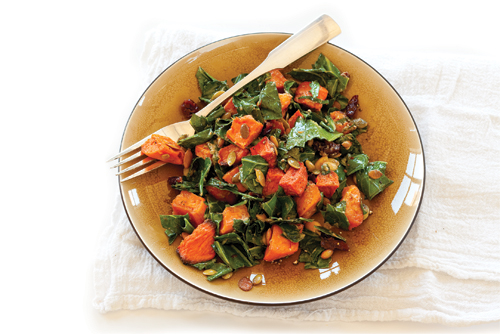

This Post Has 0 Comments